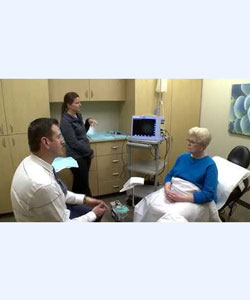Managing Uterine Polyps in the OBGYN Office Setting: Dr. Matthew Palmer
Doing office-based procedures has really been an unique way to offer patients excellent care in an efficient enjoyable manner for them having to go through something like this.
Polyps, you know, generally are fairly easy to resect and we generally use a hysteroscopic approach.
Adding a device like Resectr does not require a significant amount of training. It’s actually very simple to learn and very effective.
It’s an easy procedure to do right here in an office. It’s quicker, it’s faster.
The doctors can still see patients before the procedure and then also after, so it doesn’t interrupt their day.
It doesn’t use their whole day up, so the typical workflow is:
- the patient would would arrive to the office about 45 minutes or an hour before the procedure;
- she’d be greeted by the nurse who would then take her vital signs and and speak with her a little bit about what to expect
- and then administer some pre-treatment medications.
Typically the setup involves a sterile environment, in the sense that we like to have all of the packaging and the equipment, like the hysteroscope and the speculums and the tenaculum and things open sterily and then kept on a sterile tray.
The only thing that we would open at the time the patient’s in the room, would be the the actual Resectr device.
Once we’ve established that there is intrauterine pathology, we have a small portable suction device, with a canister that has a collection sock and we just plug it into the wall.
It’s very simple and easy.
Once they are in the room, I will come in, I’ll greet the patient, we’ll talk a little bit about what to expect during and after the procedure, and then generally I will place the paracervical block.
We’ll allow that block to set up for about five minutes or so and then begin the hysteroscopic procedure.

